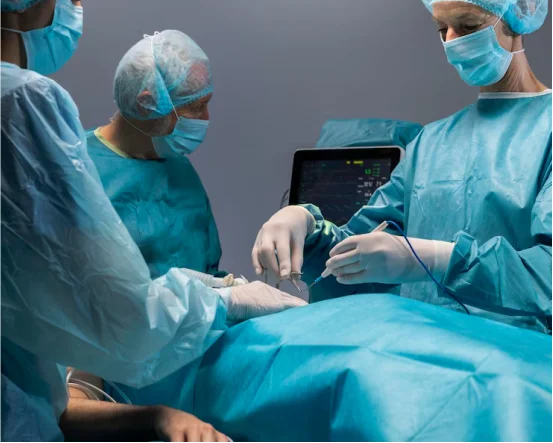Introduction
Spinal fusion surgery is a medical procedure designed to join two or more vertebrae in the spine, effectively eliminating motion between them. This technique is employed to stabilize the spine, correct deformities, or reduce pain associated with movement. It involves the use of bone grafts, screws, and rods to fuse the bones together, allowing them to heal into a single, solid structure over time.
While spinal fusion is a powerful tool in the field of spine surgery, it is not the first line of treatment for most back conditions. Doctors typically recommend conservative treatments such as physical therapy, medications, or lifestyle changes before considering surgical intervention. However, when these measures fail to provide relief or when the spine’s structural integrity is severely compromised, spinal fusion surgery may become necessary.
This blog explores the primary reasons when is spinal fusion surgery needed, highlighting the medical conditions and scenarios that warrant this complex yet effective procedure.
When is Spinal Fusion Surgery Needed?
- Chronic Degenerative Disc Disease :- Degenerative Disc Disease (DDD) is one of the most common reasons for spinal fusion surgery. This condition occurs when the intervertebral discs, which act as shock absorbers between the vertebrae, start to deteriorate due to aging or wear and tear. As the discs lose their cushioning ability, patients may experience chronic back pain, stiffness, and limited mobility. In some cases, the pain becomes persistent and fails to respond to non-surgical treatments such as physical therapy, epidural injections, or pain medications. If imaging studies show significant disc degeneration and instability in the spine, spinal fusion may be recommended to stabilize the affected segment and relieve pain. Fusing the vertebrae together helps eliminate the movement causing irritation or pressure on surrounding nerves.
- Spinal Instability :- Spinal instability refers to an abnormal movement between two vertebrae that can lead to pain, nerve compression, and progressive spinal deformities. It can be caused by trauma, arthritis, tumors, or previous surgeries. In cases where the spine is not holding its natural alignment or when one vertebra slips over another, a condition called spondylolisthesis fusion surgery becomes an important option. Spinal fusion restores stability by locking the unstable vertebrae in place and preventing abnormal motion. It is often combined with other procedures like laminectomy or discectomy when nerve decompression is also needed. Stabilizing the spine not only reduces pain but also prevents further slippage or neurological damage.
- Spinal Deformities :- Structural deformities of the spine, such as scoliosis or kyphosis, can become severe enough to interfere with function and quality of life. Scoliosis, a sideways curvature of the spine, often develops during adolescence but may also appear in adulthood due to degenerative changes. Kyphosis, or excessive forward rounding of the upper back, can result from age-related changes or conditions like Scheuermann’s disease. In such cases, spinal fusion surgery is performed to realign and stabilize the spine. Rods, screws, and bone grafts are used to correct the curve and maintain proper posture. This not only improves appearance but also alleviates pain and prevents the progression of deformity. Surgical intervention becomes especially crucial when the curvature continues to worsen or causes compression of the lungs, nerves, or internal organs.
- Herniated Disc with Instability :- A herniated disc occurs when the soft inner core of a spinal disc pushes out through a crack in the tougher outer layer, irritating nearby nerves and causing pain, numbness, or weakness. While many herniated discs can be treated with rest, physical therapy, and anti-inflammatory medications, some cases do not respond to conservative care. If a patient has a herniated disc along with signs of spinal instability or recurring disc issues after previous surgery, spinal fusion may be recommended along with disc removal. By fusing the vertebrae around the damaged disc, surgeons can eliminate the source of mechanical pain and reduce the likelihood of future herniations in the same segment.
- Traumatic Spinal Fractures :- Trauma such as car accidents, falls, or sports injuries can lead to spinal fractures that disrupt the normal alignment of the vertebrae. If the fracture is unstable and puts the spinal cord or nerves at risk, surgical stabilization is needed. Spinal fusion is often used in these cases to restore spinal alignment and protect neurological function. The fusion helps anchor the broken vertebrae with screws and rods, allowing them to heal in the correct position. In certain cases, especially when the spinal cord is involved, fusion may be combined with decompression surgery to relieve pressure on the nerves and improve neurological recovery.
- Spinal Infections or Tumors :- Infections like osteomyelitis or discitis and tumors that affect the spine can weaken the vertebral bones and lead to structural instability. These conditions can cause severe back pain, nerve damage, or even spinal collapse. Once the infection is controlled or the tumor is removed, spinal fusion may be necessary to rebuild and support the affected area. By fusing the vertebrae and using supportive hardware, surgeons can restore stability, reduce pain, and prevent further neurological compromise. In cases of spinal cancer, fusion may also improve mobility and quality of life, especially if large sections of the spine are involved.
- Failed Previous Spine Surgery :- Sometimes, patients who have undergone spine surgery continue to experience pain or develop new symptoms due to instability, scar tissue, or adjacent segment degeneration. This condition is known as failed back surgery syndrome (FBSS). When further conservative treatment is ineffective, spinal fusion may be performed as a revision surgery. Fusion can help address residual instability, deformity, or recurring disc problems that were not resolved in the initial procedure. Though more complex, revision fusion surgery can significantly improve pain levels and functional outcomes for those with persistent post-surgical issues.
Conclusion
Spinal fusion surgery is a carefully considered treatment used to address various spinal conditions that lead to instability, deformity, or chronic pain. While it is not the first option for most back issues, it becomes essential when non-surgical approaches fail or when there is a significant threat to the patient’s mobility or neurological health. Conditions like degenerative disc disease, traumatic injuries, spinal deformities, and tumors may all necessitate this surgical intervention to restore stability and function.
Like any major surgery, spinal fusion carries certain risks and requires a thorough diagnosis, imaging studies, and discussion between the patient and healthcare team. However, when appropriately indicated and skillfully performed, it can offer long-term relief, improved mobility, and a better quality of life for individuals struggling with spinal disorders.























